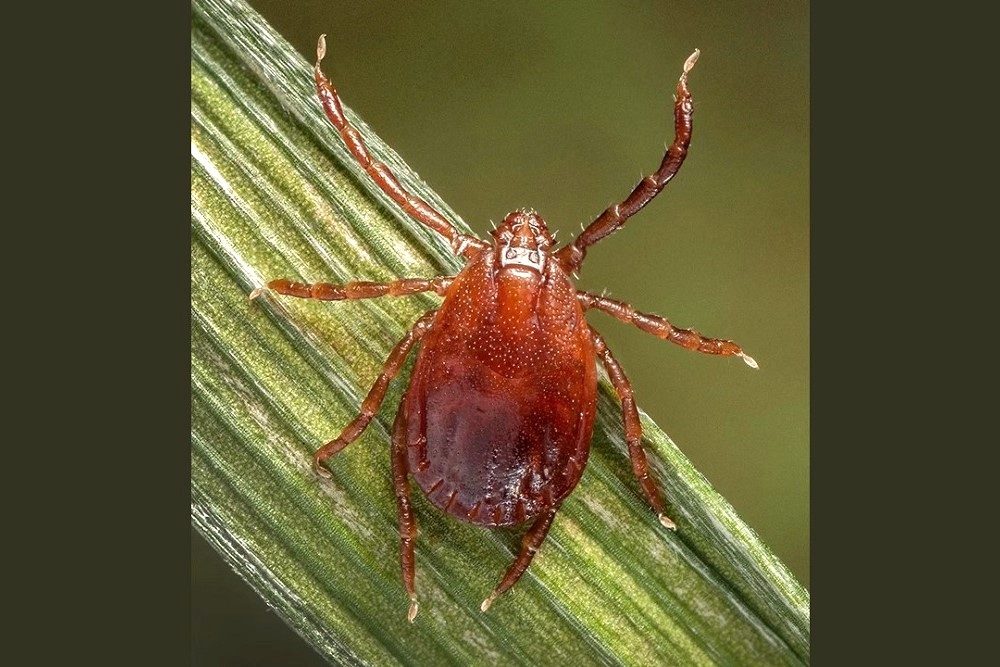BOAH: Asian Longhorned Ticks Could Harm Livestock, Pets

As summer heats up, you need to be on the lookout for the Asian Longhorned Tick. The pest has now been found in Indiana—and can cause a lot of harm to your cattle and other livestock.
“It’s a very, very tiny little tick. It’s very small, like the size of a pinhead, so it can be hard to spot, but they can do some big damage,” according to Denise Derrer Spears, Communications Director with the Indiana State Board of Animal Health (BOAH).
“[The Asian Longhorned Ticks] can have some impact because they can carry diseases. Also, the tick infestations can become so intense that it can actually cause exsanguination (severe blood loss) and cause death. It’s a terrible way for an any animal to have to die,” she says.
“One of the other concerns we have with Asian Longhorn Ticks, particularly for cattle producers, is that they will carry bovine theileriosis and can cause anemia and death in cattle.”
These ticks were recently discovered in Dearborn County on a beef cow that was so severely infested, it died from severe blood loss. The ticks have also been found in Hendricks County, as well as across the northern state border with Michigan in Berrien County.
Those ticks can not only harm cattle, sheep, goats, and horses—but also your dogs and cats.
“It’s a good idea to keep an eye on your animals that are outside,” she says. “When you talk about dogs and cats, it’s very easy to get them on a flea-and-tick preventative. But, look over your animals if they do go outside. It’s a challenge when you’ve got cattle out on pasture—especially in Southern Indiana on the rolling hills. You may not be laying eyes on those animals on a regular basis, so it could be hard to pick up, so we highly recommended that you watch for that.”
A major problem with the Asian Longhorned Tick is that the female can reproduce without mating (parthenogenesis) and can lay up to 2,000 eggs at a time. The population of this pest can undergo explosive growth in a short period of time.
These ticks can also carry certain pathogens capable of causing tickborne diseases that affect humans and animals, such as: Rocky Mountain spotted fever, heartland virus, and Powassan virus. However, those diseases have not been confirmed outside of a laboratory setting in the United States.
They are most often found in tall grass and pasture areas and can adapt well to the environment, away from the host, and in a wide range of conditions.
Veterinarians, livestock producers and pet owners who notice severe tick infestations and/or unusual ticks consistent with ALHTs are encouraged to contact the Indiana Department of Health medical entomology team. ALHT-suspect ticks may be submitted to the IDOH Entomology Laboratory for identification. Specimens should be as fresh as possible and suspended in ethanol (70% or higher) or isopropyl alcohol in a glass or plastic via with a leak-proof closure. A submission form with mailing instructions is available here: https://www.in.gov/health/idepd/zoonotic-and-vectorborne-epidemiology-entomology/arthropod-identification/
If a tick is found attached to a person, the individual should contact his/her healthcare provider for further recommendations. Saving the tick in a plastic baggie to show the healthcare provider may be helpful.
Indiana became the 19th state to have a confirmed detection in 2023, when an Asian Longhorned Tick was found on a Switzerland County farm. Subsequent ticks were found in Ohio, Dubois, and Spencer counties.
A webinar recording about ALHTs and associated diseases appropriate for veterinarians and livestock producers is on the BOAH YouTube channel at: https://www.youtube.com/watch?v=QD6AE5P18cM
CLICK BELOW to hear Hoosier Ag Today’s radio news report:
